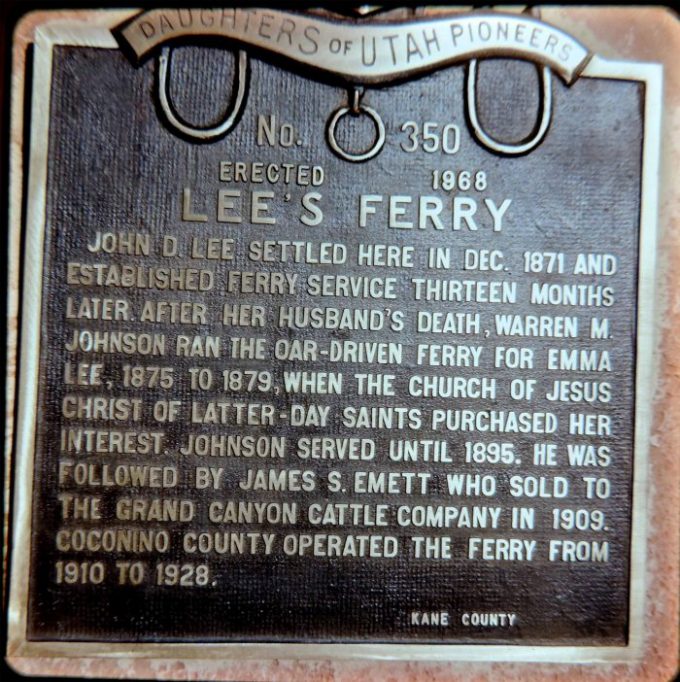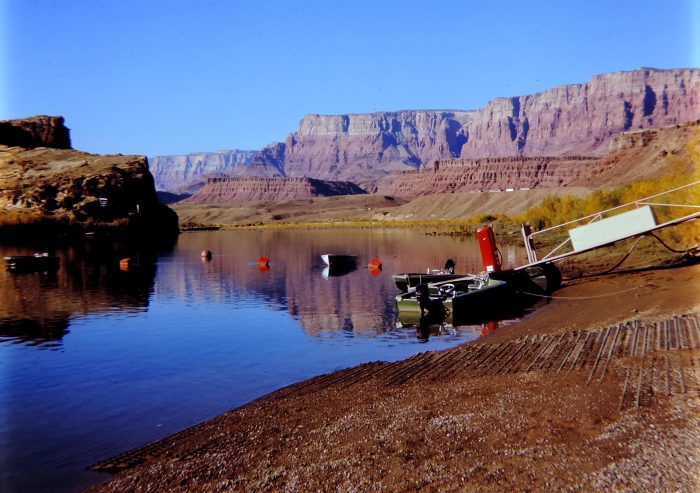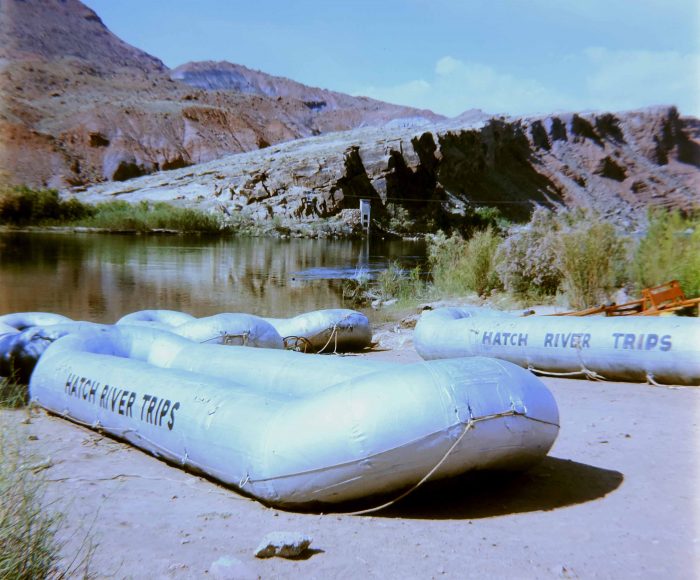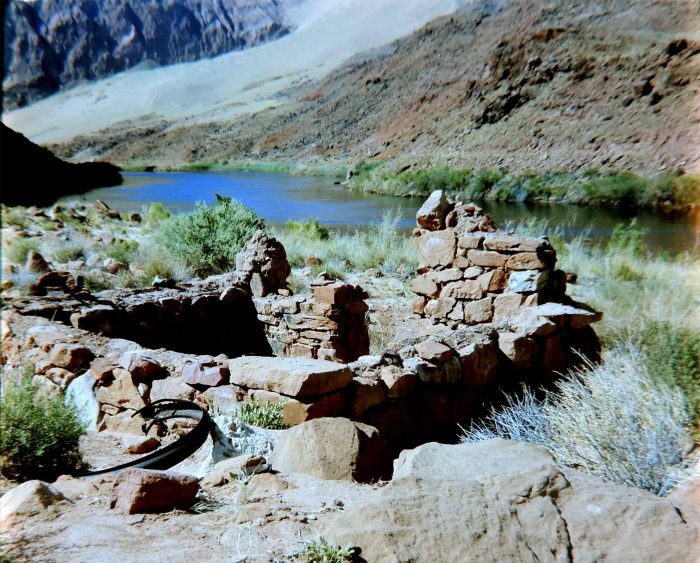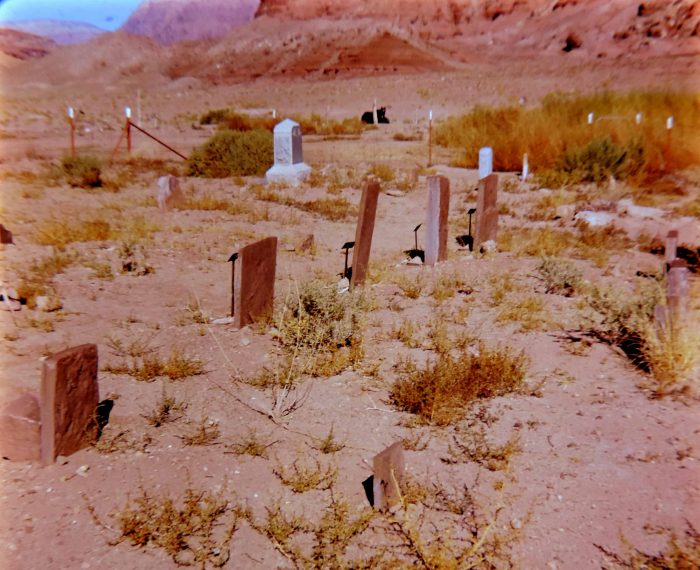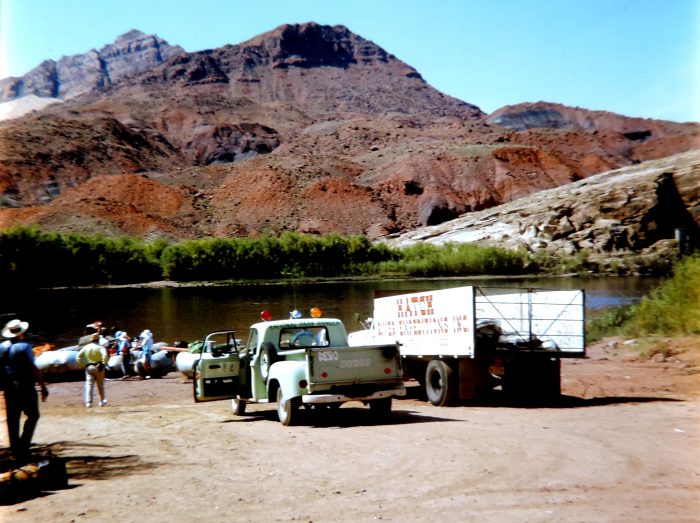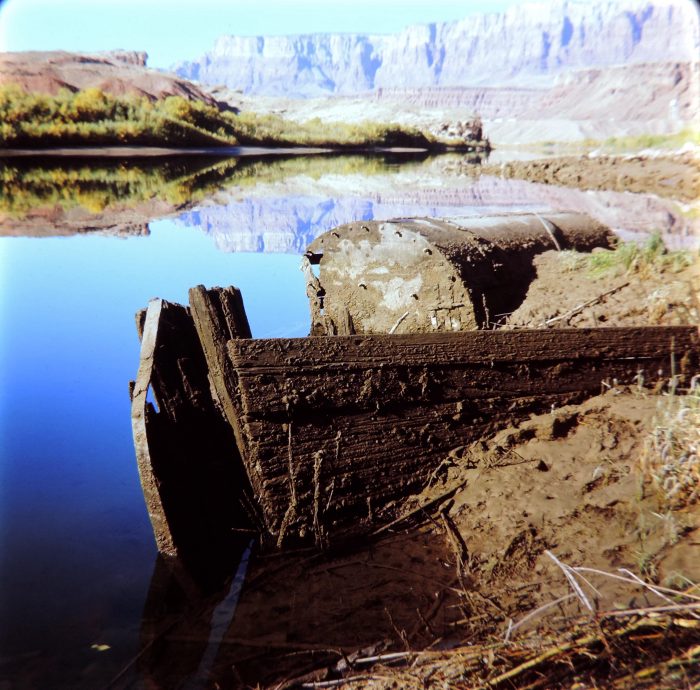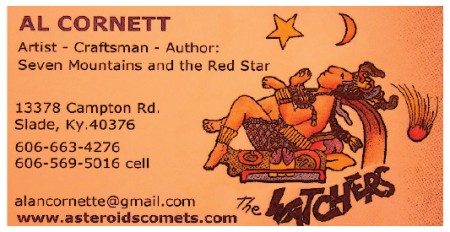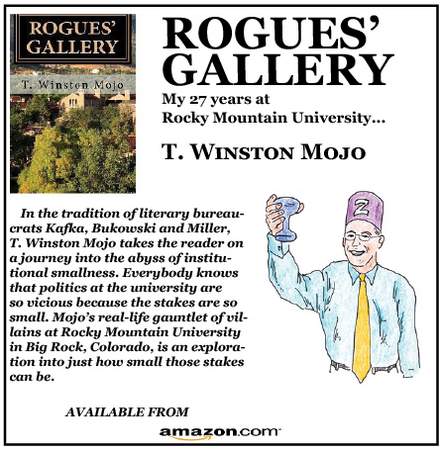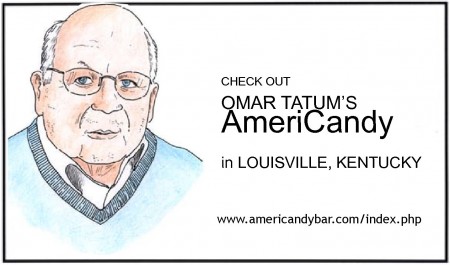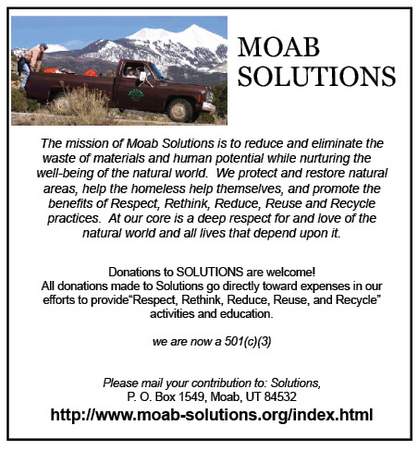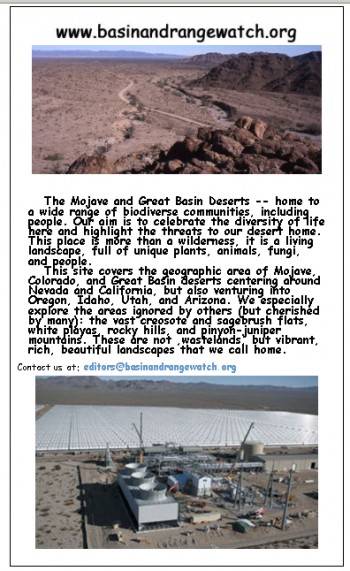Lee’s Ferry
“Near MARBLE CANYON, 73.9 m., is Marble Canyon Lodge (spring water, hotel and cottages). Echo Cliffs and Kaibito Plateau, in the Navajo Reservation, are visible to the east.
“Left from Marble Canyon filling station on a narrow side road, frequently little more than a creek bed, to LEE’S FERRY, 6 m.; from 1872 to the completion of Navajo Bridge this was the only possible crossing of the Colorado for many miles. It was established by John D. Lee, a Mormon pioneer who, with his family, settled at the confluence of the Paria and Colorado rivers, built a log cabin, and acquired ferry rights at the point that had been held by the Mormon church. His first boat, the Emma Dean, had been abandoned on the bank of the Colorado by Major John Wesley Powell (see Grand Canyon). Later Lee built a boat of pine from the Kaibab Forest. Timbers were hauled sixty miles by ox team and hewn into planks two or three inches thick. The boat was sixteen feet wide and forty-five feet long, with two decks and could carry four wagons. It was operated by four men, two in the bow and two in the stern. The passage was always attended with peril since there are dangerous rapids both above and below the crossing. The ferry was so navigated that the river’s current carried it across; it was also carried back by the current and then towed upstream to the starting point.
“This ferry was used by the Mormons in their migration into the Little Colorado River Valley of northern Arizona. In 1873 a Mormon party established the first wagon road south of the Colorado River from the ferry.
“In 1857, thirteen years before Lee settled on the Colorado, a massacre had taken place at Mountain Meadows, an isolated section of the Utah Territory. A group of men reputedly disguised as Indians had attacked a train of Arkansas and Missouri emigrants, killing 115. There was much uncertainty in placing the responsibility for the killings, but Lee was accused of leading the attackers and eventually was arrested and tried. A first trial resulted in a disagreement; a second in conviction and the death sentence which was executed in 1877.
“The ferry was operated for several years by one of his widows and finally sold to the Mormon church. In 1909 the church sold the ferry to a cattle company that was then grazing stock on the ranges to the west. In 1916 Coconino County took over the property and operated it until the completion of Navajo Bridge. Lee’s ranch is now a guest ranch.
Text from the Arizona WPA Writer’s Guide. Published in 1940.
1968
HERB RINGER came West from his home in New Jersey in 1939. Camera in hand,
Herb captured the American West, from the Canadian Border to the Rio Grande and
from the Big Sur coast to the High Plains.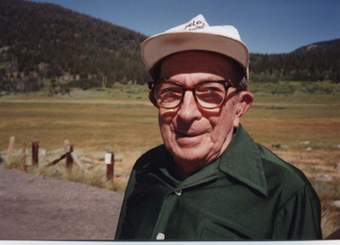
We believe Herb’s collection of Life in the West is one of the finest. His work has been
published in The Zephyr for 20 years. I am pleased finally, to offer Herb’s photographs
in color. We are also building a new ‘album’ of his work, elsewhere on this site.
My dear friend died on December 11, 1998…JS
For the Most Comprehensive Collection of Herb Ringer Photographs Online, Click Here to see the Herb Ringer Issue of the Zephyr.
To comment, scroll to the bottom of the page.
Don’t forget the Zephyr ads! All links are hot!


